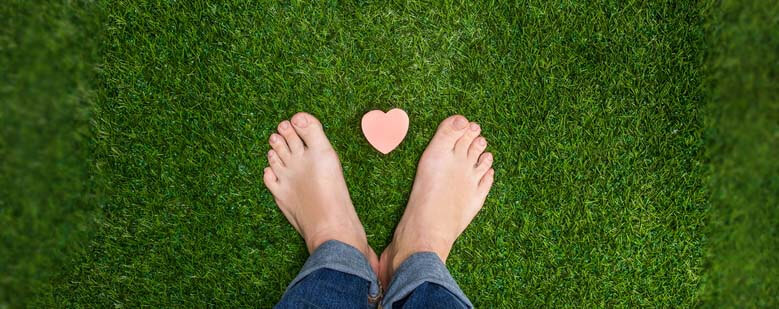
HOW TO HAVE A GREAT LAWN
Many lawn owners want the perfect lawn and no chemicals. The key to a chemical-free lawn is patience. Soil that’s been chemically treated has lost its naturally occurring, beneficial micro-organisms that nourish healthy plants. Like any addict, it will suffer withdrawal symptoms.
If you don’t want to use chemicals on your lawn, the best defense is a good offense. A thin layer of compost, manure, or other organic material forestalls the common weeds, bugs, and diseases. When problems do arise in the lawn, there are many natural alternatives to using herbicides, pesticides, and fertilizers.
Crabgrass, the weed everyone loves to hate, tops America’s list of lawn complaints. The best crabgrass preventer is a healthy, thick lawn and soil with the proper pH balance (7.0-7.5). Perennial rye grass is the best competition for crabgrass. It also provides some insect control, as it emits a natural poison that gives some small damaging bugs the “flu”. Fertilizing is key and must be done in the spring and fall. Crabgrass thrives in compacted lawns. Aeration can help. A mixture of 1 pint of hydrogen peroxide, diluted to 3 percent, per 100 square feet of lawn can help eradicate the pesky plant.

Your neighbors probably wouldn’t stand for a dandelion yard, but consider this: Dandelions make great wine, are a natural diuretic, can be dried and made into coffee, and can be braided into lovely necklaces. You can eat their young leaves in salads, and in fact, they were brought to this land as an exotic green. They’re an excellent source of potassium, phosphorus, calcium, and vitamin A. Not convinced and still want to get rid of your dandelions? Get a weeding fork. Dandelions have a two-year life cycle. When they’re in the first year and appear as basal foliage, dig them out with a vengeance. It’s great exercise. If you miss some and they flower the next year, dig them out before they reach the seed (white puffy) stage. If you let them go to seed and spread their progeny, you’ll have to start the process all over again. A thick, healthy lawn is again the best defense against dandelions, as it is for other common broadleaf weeds. T
Insecticides or pesticides are hardly ever necessary to control the most common lawn pests. Japanese beetle grubs and their adult counterparts are a problem in much of the eastern United States. They cause lawns to turn yellow and die but are fairly easily controlled through nonpoisonous means. In the grub stage of late spring and fall (beetles have two life cycles per season), spray the lawn with 2 tablespoons of liquid dishwashing soap diluted in 1 gallon of water per 1,000 square feet. The grubs will surface and the birds will love you. Spray once each week until no more grubs surface. In the adult beetle state, handpick them and squish them, or drop them into a bucket of soapy water.
A spongy lawn indicates a thatch problem. This tightly intermingled layer of dead and decaying vegetation – an unhealthy buildup of organic matter that can cause brown patches in a lawn – indicates a pH imbalance. Thatch is a problem especially in lawns previously treated with chemicals where the grass’s natural ability to decay has been destroyed. Dry thatch repels water, while wet thatch invites fungal diseases. The best control is raising the lawn soil’s pH level. One way to do this is to rent a power rake (inquire at your garden supply center), which uses rigid wire tines or steel blades that slice through the thatch and lift the debris and some soil to the surface to encourage natural decay.
The Old Farmer’s 2019 Almanac